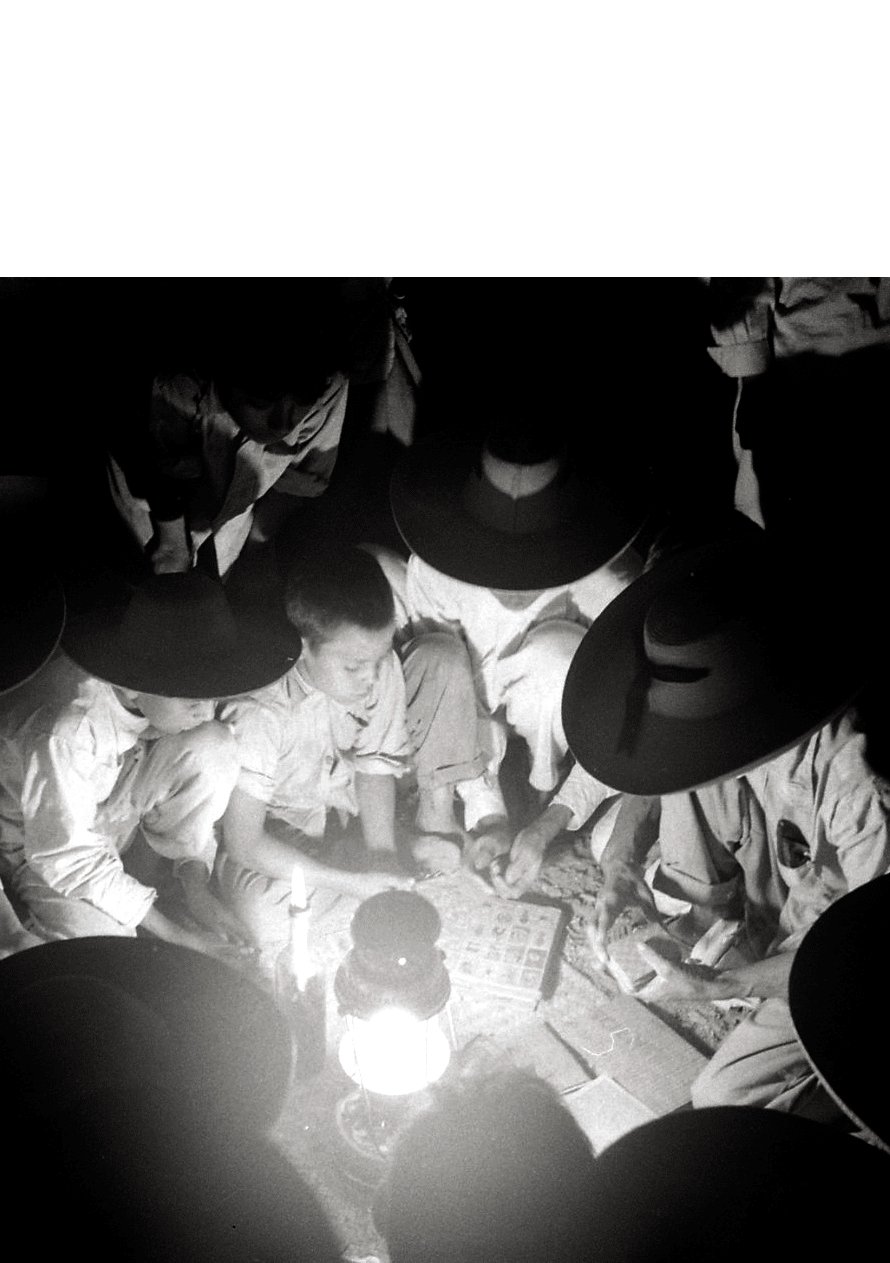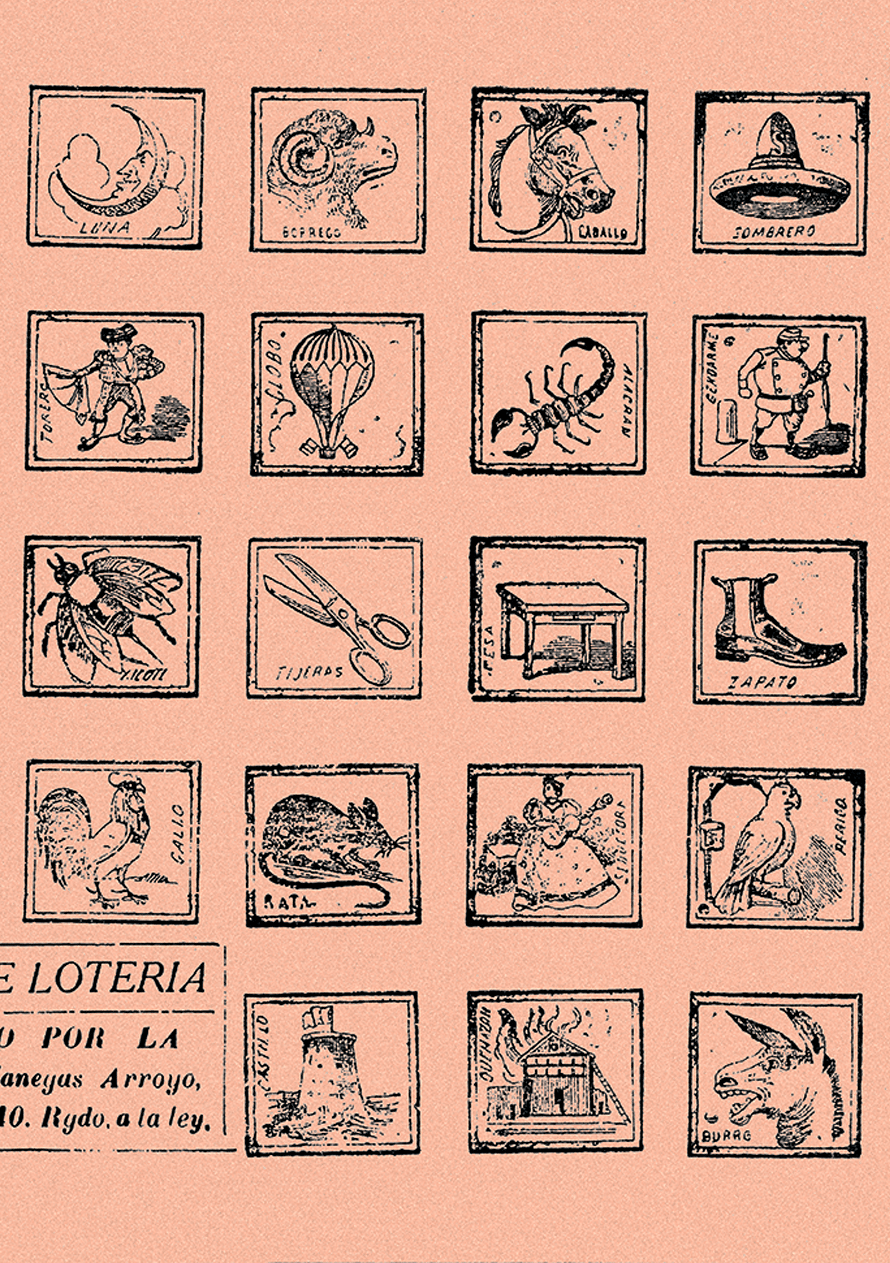
Through its traditional invitation heard on the streets to play lottery, it became one of the most representative traditional games in the country, and an essential element within the symbolic discourse of Mexican identity.
Word has it that the picture lottery was born in Italy and arrived in New Spain along with the conquerors. Later, in times of the struggle for independence, it became the favorite pastime of military troops. Of all the versions that exist, the one known as the “authentic Mexican lottery” is that one created in the 19th century by Pasatiempos Gallo, property of Clemente Jacques. It was the first industrialized lottery that was commercialized in the country and exported to other countries.
The game consists of a deck with 54 cards, each one illustrated with a traditional Mexican stamp, and with several boards or cardboard sheets with 16 random figures, which are marked with beans as each image is sung by a caller, who improvises verses and sayings to present each figure.
Pretty May 5th, the national ensign: the flag. The help of San Luis, which they call the cactus: the paddle cactus. Stay still, Valentín, do not go to fight: the brave one. Everything fits in a little jar, when you know how to place it: the jug.[ref id="30"]



